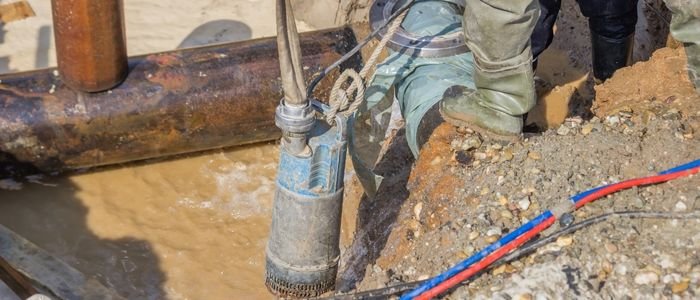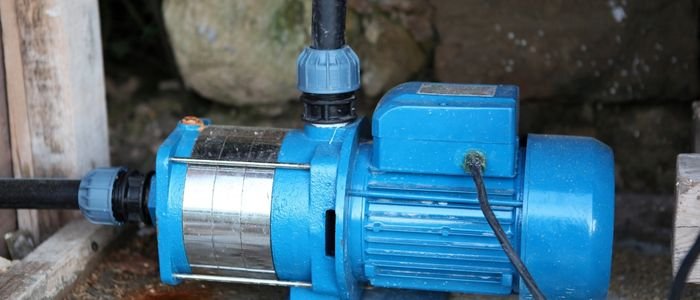An electric submerged slurry pump is used in the dredging, quarrying, and mining industries to move sand and sludge. All Stormy models are made of materials that don’t wear down quickly, and they all come with an agitator that moves solids around in the water.
You can get submersible slurry pumps, in which the whole pump is under the water, or a column pump, in which the pump body is under the water, but the motor is on top of a column.
A pump that can be fully submerged can be called both a submersible pump and a submerged slurry pump.
This post will help you understand submerged slurry pumps from Kingda. So, keep on reading.
What is a Submerged Slurry Pump?
This is designed to work with the pump and the motor fully submerged in water. A hermetically sealed motor is close-coupled to the pump body in this type of pump. The watertight enclosure around the engine is typically filled with oil to protect it from damage by preventing any liquid from entering and causing a short circuit.
When a pump is submerged, there is positive fluid pressure at the pump’s inlet. The efficiency in its operation results from less energy used to pump fluid.
Furthermore, it is used to transport liquid-containing solid particles. It has a wide range of industrial applications.
Purposely, the design accommodates various types of slurries that differ in solid concentration, particle size, shape, and solution composition.
What is a Submersible Pump for Water?
A submersible pump is an electric pump with a closed coupling. The electric motor used is completely sealed and closed-coupled with the pump. It changes the spinning energy of the pump impeller into kinetic energy, which it then turns into pressure energy because of how its body is built.
One of the best things about submersible pumps is that they don’t cause cavitation. This type of pump needed a positive head and didn’t need priming because the whole pump was submerged. Less electricity is required to run it because less torque is necessary to turn the impeller assembly.
A submersible pump is a type of close-coupled centrifugal pump. Submersible pumps can be used for various tasks, such as moving semi-solid liquids or water. They can also be used to move clean fluids.
How does a Pump that Goes Underwater Work?
The way a submersible pump works
This pump works in the same way that a single-stage centrifugal pump does. When electricity is given to the motor, the motor starts to turn the pump shaft. Because of this, pressure builds up inside the pump casing, and liquid flows into the pump.
This process continues until the motor stops when the pump impeller pushes the fluid into the discharge pipe. This type of pump works because liquid keeps filling up the pump casing, which causes the liquid to start flowing out.

This type of pump can be used with either a horizontal or a vertical motor arrangement. This is used in places with positive suction or a lot of water, like a construction site, a flooded basement, or a worksite. It is also used to move slurry liquid. When this type of pump runs dry, it is dangerous and could lead to catastrophic failure and more maintenance.
What Kinds of Submersible Pumps are There?
The following are six different types of submersible pumps.
- Good pumps.
- Grinder-type pump.
- Deep well pump.
- Bladder-type pump.
- Bottom-drawer pumps (bore well type pump).
- Fountain pump.
- How to choose the best submersible pump?
Things to consider in choosing a good submersible pump.
Below are the tips.
- How much liquid needs to go out?
- How big should the tanks or wells be where the pump is to be put in?
- How many heads does it need to be high enough to drain?
- The amount of flow per second
- Pressure requirement
- how hot or cold the service liquid is.
- What kind of service is liquid
- power use of the motor and the user’s financial situation?
- This is available in strengths ranging from 1 to 250 hp.
- The capacity is between 20 and 28,000 liters per minute. And the total head ranges from 0.4 to 6 bars.
How Does a Submersible Pump Work?
Submersible pump parts
- Electric motor
- diffuser
- check valve
- cable
- casing
- Shaft
- coupling
- impeller
- coupling
Which Pipe is Best for Pumps that Go Underwater?
The choice of pipe depends on the fluid, how much it costs, and how long it needs to last. Most of the time, PVC pipe is used with this type of pump because it has low pressure and less flow.
Why does a Submersible Pump Only Pump a Small Amount of Water?
To troubleshoot a submersible pump that works at low pressure, you need to check the following points before any maintenance.
- See if there’s enough electricity.
- Check for any leaks on the suction side.
- Check if the impeller is clogged or open—a blockage in the discharge line.
- Check if a suction head is available.
The Pros and Cons of a Submersible Pump?
- There is no need to prime this pump.
- There is more to efficiency than a centrifugal pump.
- It can also handle slurry and small amounts of liquid.
- Less noisy.
- Not all of the benefits of a submersible pump
Can You Submerge a Puddle Pump?
Puddle pumps (also known as puddle suckers) are submersible pumps that drain low-level water from flat surfaces. Unlike water pumps, puddle pumps don’t need to be submerged entirely to work. This makes them great for removing unwanted water and protecting against floods.
Often, it’s important to know how puddle pumps are different from traditional submersible water pumps. We’ll also look at the various applications in choosing the right thing.
Also, puddle pumps are very portable and can be moved easily. They can be put right into the water and work even if they aren’t completely submerged. They can also be fully immersed, making them highly versatile.

How do Puddle Pumps Work?
Puddle pumps or suckers use centrifugal force to transport water away from the source. A seal and volute in the pump’s base allow for low-level pumping, which means they can pump as low as 1 mm. An integrated non-return valve prevents water backflow.
With accessories like the PumpPal and LevelPal, puddle suckers can be controlled by hand or on their own. If the pump needs to be turned on and off automatically, you could use the PalPack dewatering set. This set includes a PuddlePal, a PumpPal, and a LevelPal for level control.
How Long Can a Submersible Pump Stay Underwater?
Sump pumps can usually run for six to twenty-four hours straight, depending on how much rain there has been and how good the pump is. The aftermath of heavy rains or even flooding increases the demand for your sump pump to keep your home’s low areas dry.
The motor design of the sump pump determines how long it can run continuously. The two types of sump pump motors are intermittent and continuous. Intermittent-duty engines, as the name implies, run when needed but occasionally stop. Continuous-duty motors can run for an extended period without stopping.
Intermittent-duty motors run continuously for a short period before stopping, which is usually enough to keep water out of low-level areas of your home and extend the life of the sump pump motor. A continuous-duty engine can run nonstop for up to 24 hours to remove water from your home, but it only lasts as long as an intermittent-style sump pump motor.
Should a Submersible Pump Remain Submerged While not in Use?
Depending on the amount of water used, this could take days, minutes, hours, or even months. If it will be unused for an extended period, take it out, thoroughly clean it, and allow it to dry.
If you use it frequently, I will leave it alone unless the water contains corrosive substances, leaves, or other elements that would harm it. If the water evaporates while you’re not using it, nasty things will dry on or in it, so don’t leave it submerged.

How Safe are Submersible Pumps?
Submersible pumps are a great, safe option for any home maintenance because the pump’s dangerous components are well hidden underwater. This keeps children from tampering with them, which can be hazardous for above-ground pumps.
However, it is still recommended that you keep an eye on children and pets while using a submersible pump to ensure they are kept at a safe distance to avoid any harm. Submersible pumps are also safe from electrical shorts because a watertight gasket seals the unit so that water can’t leak in.
Submersible pumps are often used in industrial settings like oil wells, pumping sewage, pumping slurry, filtration systems, and other places where the motor or pump assembly must be submerged in water or another liquid.
But how does a submerged electrical system operate safely? Even as children, we understand that electricity and water can be dangerous.
Liquids that submersible pumps work in must not come into contact with electrical parts, because this could damage them. Manufacturers of pumps keep this from happening by sealing all of the features inside a cast iron or synthetic casing.
Learn more about the best submersible pumps from kingda and their operations. Visit Kingda.com for more expert advice on choosing the best pump. We guarantee that you will always be able to find the right slurry pump to meet your processing needs. Contact us right now.


